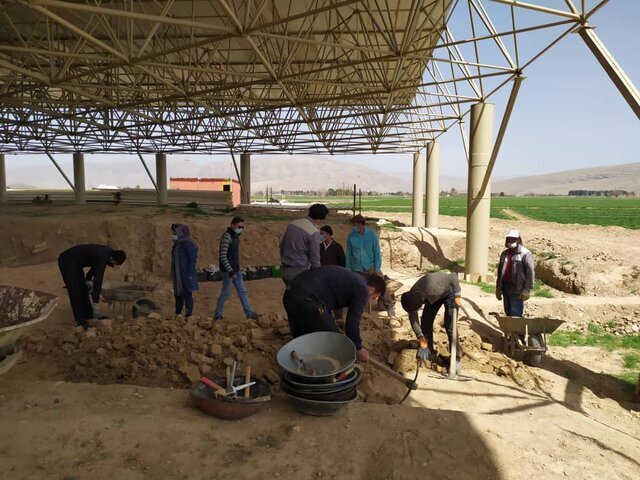New tourism destination to emerge near Persepolis

TEHRAN – Tall-e Ajori, which has recently yielded the ruins of a majestic historical gateway, would be turned into a tourism destination. The archaeological site is situated near the UNESCO-registered Persepolis in southern Iran.
“Tall-e Ajori holds considerable potential to be turned into a travel destination, and it is one of our priorities to do so in near future…. Tall-e Ajori and Persepolis represent significant portions of the Iranian history,” Research Institute for Cultural Heritage and Tourism Director Behrouz Omrani announced on Saturday.
The official said that tours of Persepolis can started from Tall-e Ajor to have a more detailed introduction of the Iranian culture of the time. “The route from this historical and cultural site to Persepolis, allows tourists and researchers to see the art of the Achaemenids from another angle…,” he explained.
Excavations and surveys on Tall-e-Ajori are expected to help archaeologists uncover more about the history of the royal city. Supervised by a joint mission of Iranian and Italian archaeologists and cultural heritage experts, the excavations on Tall-e-Ajori uncovered vestiges of a massive gateway measuring 30 by 40 meters with a height of approximately 12 meters.
The archaeologists succeeded in proving that Cyrus the Great had ordered the construction of the gateway near Persepolis in Tall-e-Ajori and that this magnificent gateway had been put into operation during the reign of his son Cambyses.
“The building had a corridor in the center, which was in form of a rectangular room measuring eight by twelve meters, and inside this central room, there were four living chairs. And the central corridor opened on both sides to the Achaemenid campus,” according to Alireza Askari-Charoudi who is a senior Iranian archaeologist.
The royal city of Persepolis ranks among the archaeological sites which have no equivalent, considering its unique architecture, urban planning, construction technology, and art. Persepolis, also known as Takht-e Jamshid, whose magnificent ruins rest at the foot of Kuh-e Rahmat (Mountain of Mercy) is situated 60 kilometers northeast of the city of Shiraz in Fars province.
The city was burnt by Alexander the Great in 330 BC apparently as revenge to the Persians because it seems the Persian King Xerxes had burnt the Greek City of Athens around 150 years earlier. The city’s immense terrace was begun about 518 BC by Darius the Great, the Achaemenid Empire’s king. On this terrace, successive kings erected a series of architecturally stunning palatial buildings, among them the massive Apadana palace and the Throne Hall (“Hundred-Column Hall”).
This 13-ha ensemble of majestic approaches, monumental stairways, throne rooms (Apadana), reception rooms, and dependencies is classified among the world’s greatest archaeological sites. Persepolis was the seat of the government of the Achaemenid Empire, though it was designed primarily to be a showplace and spectacular center for the receptions and festivals of the kings and their empire.
The site is marked by a large terrace with its east side abutting the Kuh-e Rahmat (“Mount of Mercy”). The other three sides are formed by a retaining wall, varying in height with the slope of the ground from 13 to 41 feet (4 to 12 meters); on the west side, a magnificent double stair in two flights of 111 short stone steps leads to the top. On the terrace are the ruins of several colossal buildings, all constructed of a dark gray stone (often polished to a marble-like surface) from the adjacent mountain.
AFM/

Leave a Comment